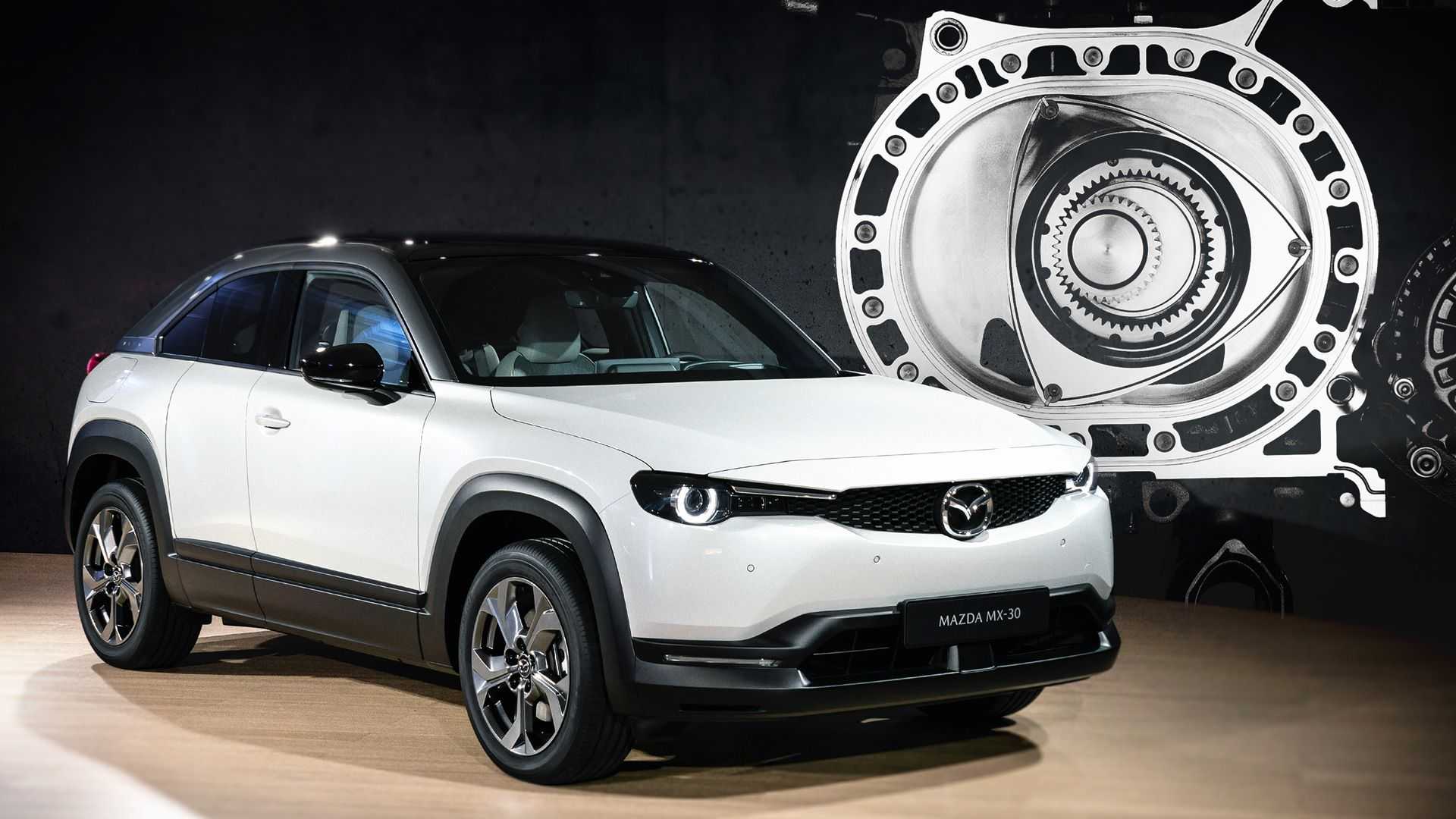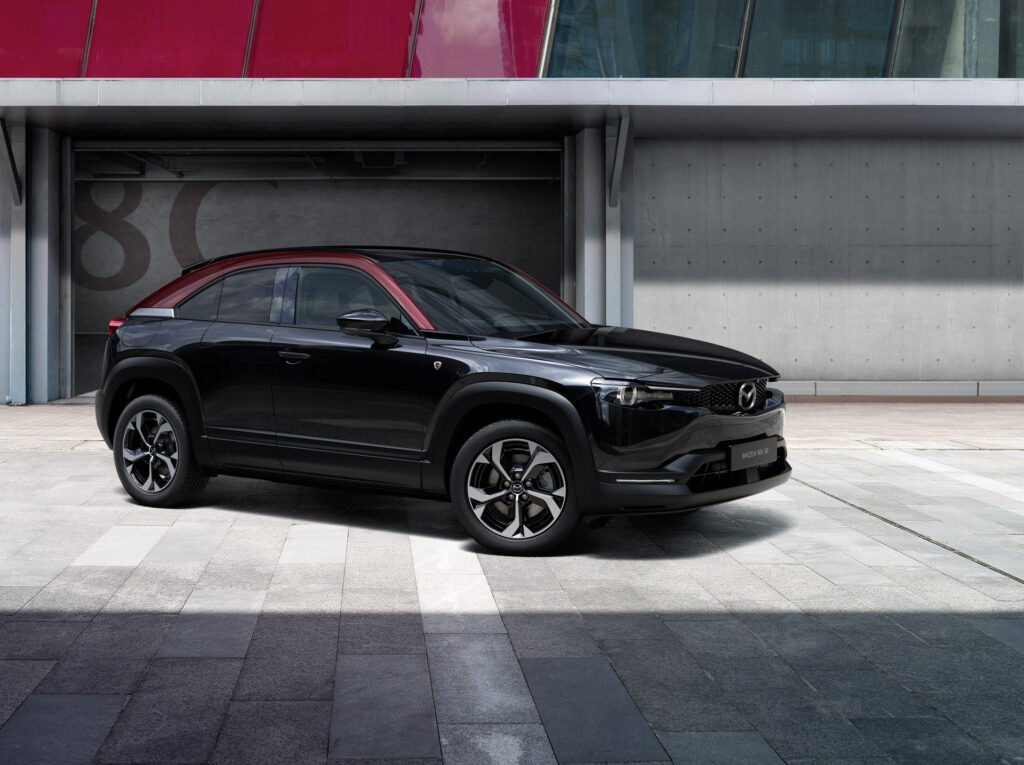Where are these images from?
Not example disappointing. Genius, actually. The images fit and make sense. That's great news.Oh lol, I thought it was a real teaser haha well that's disappointing
For sure, but teasing this stuff is just wrong. Show us what’s happening with the other Vision.That's EV though. Please do not put an RX badge on it...

Mazda are the Polyphony Digital of the real motoring world. How underwhelming can you get…Mazda's Rotary is making its debut at the beginning of next year, but probably not in the way you were expecting:

Mazda MX-30 R-EV With Rotary Engine Debuts In 2023
The Mazda MX-30 EV will get a rotary engine as a range extender for the battery.www.motor1.com
And here it is:Mazda's Rotary is making its debut at the beginning of next year, but probably not in the way you were expecting:

Mazda MX-30 R-EV With Rotary Engine Debuts In 2023
The Mazda MX-30 EV will get a rotary engine as a range extender for the battery.www.motor1.com


Ya I'm not sure what the fuel economy is since I've seen numbers ranging from 9.7L/100km, which is just about 24mpg, to 12.05L/100km. Even if it's not that bad, it would need to be vastly better to be on par with something like the Kia Nero which gets 49mpg.12.05 liters per 100km is 19.5 MPG. Seems like a bad gimmick- why use an inefficient bespoke engine for subpar performance and efficiency?
Rotary engine is back, my ass. Don't get me wrong, I hope they sell a good amount of these R-EVs but this isn't it and we all know it.
Who is the gimmick appealing to is the real question. The average consumer wouldn't be aware of Mazda's rotary history, let alone what a rotary engine is. A bespoke rotary engine would make much more sense in an enthusiast's car than a CUV. Was it really worth all the drawbacks and headache just for that sliver of extra interior space?I agree, the rotary thing is just a gimmick, although it does give slightly more interior room but that's about it.
Company car tax rates.12.05 liters per 100km is 19.5 MPG. Seems like a bad gimmick- why use an inefficient bespoke engine for subpar performance and efficiency?
My guess is young Gen Xers/older Millenials who grew up wanting an RX-7 or RX-8, at least in the US. That's probably a pretty small market segment though, and the MX-30 isn't exactly big enough to be a family car which a large percentage of the demographic would be after. The automotive press will eat it up too because of the Mazda/rotary connection and that will be a bunch of free marketing.Who is the gimmick appealing to is the real question. The average consumer wouldn't be aware of Mazda's rotary history, let alone what a rotary engine is. A bespoke rotary engine would make much more sense in an enthusiast's car than a CUV. Was it really worth all the drawbacks and headache just for that sliver of extra interior space?
Where are you seeing 12.05 liters per 100km? The figure I saw was 1 liter per 100km which is something like 283mpg.12.05 liters per 100km is 19.5 MPG. Seems like a bad gimmick- why use an inefficient bespoke engine for subpar performance and efficiency?
Rotary engine is back, my ass. Don't get me wrong, I hope they sell a good amount of these R-EVs but this isn't it and we all know it.
Compact rotary engine said to sip just 1 liter of gas per 100 km
Well... "said to" is one thing, but if the car has a 373-mile range (53 of which is the fully charged battery pack) and a 50-litre tank, that's 6.4 miles per litre, or 29mpg (imperial, not US). That converts to 9.7 litres/100km.Where are you seeing 12.05 liters per 100km? The figure I saw was 1 liter per 100km which is something like 283mpg.
I am curious to what the discrepancy is or what figure Mazda is extrapolating to claim 1l/100km, because even factoring in the electric range it doesn't appear to get near that taking into account the fuel tank size and total range.Well... "said to" is one thing, but if the car has a 373-mile range (53 of which is the fully charged battery pack) and a 50-litre tank, that's 6.4 miles per litre, or 29mpg (imperial, not US). That converts to 9.7 litres/100km.
Any other value will be from the WLTP test which, with a fully charged battery as is the standard, will result in ludicrous values.
It's WLTP. Likely the car will have been set to a mandated series mode, and an acceleration part of the test will have caused the generator to kick in to keep the battery charged and use a small amount of fuel.I am curious to what the discrepancy is or what figure Mazda is extrapolating to claim 1l/100km, because even factoring in the electric range it doesn't appear to get near that taking into account the fuel tank size and total range.
The BMW I3 REX APU got about 30mpg, so it wouldn't be a highly unusual figure. There must be a sizeable mechanical loss running an engine as a series hybrid when you consider a Prius with a much larger engine can do almost double that figure. Somebody needs to miniaturize a combined cycle gas turbine for APU duty.
It's WLTP. Likely the car will have been set to a mandated series mode, and an acceleration part of the test will have caused the generator to kick in to keep the battery charged and use a small amount of fuel.
Indeed.Chances are that the people who buy this will almost never put fuel in it as it'll be plugged in at both ends of a commute. The engine might need to turn itself on occasionally just for self-maintenance purposes, and you'll probably not even hear it.
The Volt's ICE can actually directly run the wheels in certain operation conditions though, which is a fairly meaningful difference. It's not a true/pure series hybrid like the Mazda and BMW. Honda's CRV Hybrid system works almost the same except it never actually runs in pure electric mode (though that will come at some point). I can't think of any other true series hybrid. At steady-state highway speed the losses associated with converting mechanical energy to electrical energy (ICE Generator) and then back to mechanical motion seem pretty bad. I think you would need a hyper-efficient engine (aforementioned combined cycle gas turbine can achieve 60% thermal efficiency at powerplant scale vs something like the best gasoline 4 stroke at around ~40% or a rotary at ~30%) for the tradeoff to be worth it, and even then you would still have unnecessary losses . I honestly think Honda's Hybrid (itself a hybrid of series and parallel operation like the Volt) system is the best out there and will translate to a really stellar PHEV powertrain when it finally rolls out.Indeed.
Very much like the Ampera we have at home, in which we have made nearly 60,000km so far but has only seen no more than 150 litres of petrol in its tank.
In fact, this is the closest thing I've seen to an Ampera / Volt, in the sense that it always runs on electric and the ICE works just as a generator.
The BMW i3 REx is the only other one I can think of, but I don't think I'd be wanting to make longer journeys in that.
I understand it's not what everyone wanted to see from Mazda with a rotary engine, but I find its use to be very pertinent and interesting here.
Yes, that's true regarding the combined two motor driving on the Volt. I forgot it did that (especially as the transition is unnoticeable).The Volt's ICE can actually directly run the wheels in certain operation conditions though, which is a fairly meaningful difference. It's not a true/pure series hybrid like the Mazda and BMW. Honda's CRV Hybrid system works almost the same except it never actually runs in pure electric mode (though that will come at some point). I can't think of any other true series hybrid. At steady-state highway speed the losses associated with converting mechanical energy to electrical energy (ICE Generator) and then back to mechanical motion seem pretty bad. I think you would need a hyper-efficient engine (aforementioned combined cycle gas turbine can achieve 60% thermal efficiency at powerplant scale vs something like the best gasoline 4 stroke at around ~40% or a rotary at ~30%) for the tradeoff to be worth it, and even then you would still have unnecessary losses . I honestly think Honda's Hybrid (itself a hybrid of series and parallel operation like the Volt) system is the best out there and will translate to a really stellar PHEV powertrain when it finally rolls out.
12.05 liters per 100km is 19.5 MPG. Seems like a bad gimmick- why use an inefficient bespoke engine for subpar performance and efficiency?
Rotary engine is back, my ass. Don't get me wrong, I hope they sell a good amount of these R-EVs but this isn't it and we all know it.
The Autocar article says a range of over 400 miles. 400 miles total with a fuel capacity of 50 liters or 13.2 gallons averages to over 30 mpg. Not great but with an EV range of 50 miles most people won't have to turn the engine on at all, assuming they live in Murica and have a garage where they will charge overnight.Ya I'm not sure what the fuel economy is since I've seen numbers ranging from 9.7L/100km, which is just about 24mpg, to 12.05L/100km. Even if it's not that bad, it would need to be vastly better to be on par with something like the Kia Nero which gets 49mpg.
I agree, the rotary thing is just a gimmick, although it does give slightly more interior room but that's about it.
I would describe it as OK. Where I struggle with this is the Prius Prime exists. The Prius will do around 40 miles in EV mode which is less than the Mazda but still perfectly adequate for the 95% of driving thing. But then the Prius then gets damn near 60mpg in Hybrid mode and has 650 miles of total range and has 220hp and does 0-60 in 6 seconds and cost less. The new one also looks really good. PHEVs are just the jam...I wish more people knew it.The Autocar article says a range of over 400 miles. 400 miles total with a fuel capacity of 50 liters or 13.2 gallons averages to over 30 mpg. Not great but with an EV range of 50 miles most people won't have to turn the engine on at all, assuming they live in Murica and have a garage where they will charge overnight.
Not a clue where you guys are getting all these random numbers, the only article I see posted here in Autocar.